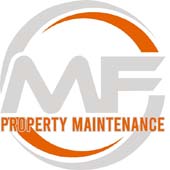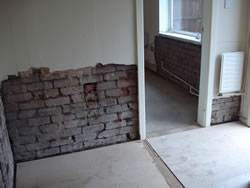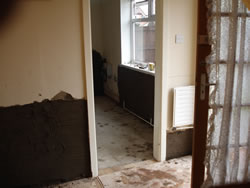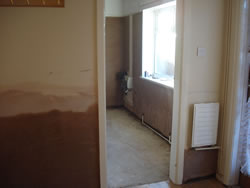
MF Property Maintenance
Telephone 01977 647637 Mobile 07786 731591
Rising Damp? Let us provide a damp proofing solution.
Click on any image below for a larger version to see 3 stages in property restoration after we install damp-proofing.
Symptoms of Rising Damp:Flaking plaster, spongy soft feel to wall, white powder or crystals appearing on wall, lifting and stained wallpaper, skirting and floor boards rotting. These are all signs of rising damp, if your property is suffering from any of these symptoms then it is likely that you have a rising damp issue. Cause of Rising Damp:Rising damp can arise for various reasons, the failure of an existing damp proof course (DPC), bridging due to the raising of external or internal ground levels or in older buildings the complete absence of a damp proof course. Treatment of Rising Damp:Chemical injection damp proof-courses and re-plastering: Injection damp-proof courses basically consist of the injection of a water repellent material into the base of a wall where it will form a diffuse band to 'control' the rising dampness. Unlike a physical damp proof course which provides an impervious and immediate cut in rising water, the chemical systems will generally only control the rising water -- not stop it. There are a number of physical factors related to the substrate and injection processes which govern why this is. Therefore, to provide a non-spoiling decorative surface re-plastering is required. First removal of the old plasterwork at a minimum of 1 meter high removes potentially heavy contamination with This function is extremely important because: -
|
Fundamentally, chemical injection damp-proofing is a system -- the injection of the damp proof course to 'control' the rising damp, and the re-plastering to prevent future spoiling - the processes are inseparable.
Underground and basement tanking
Cellars and basements can be brought into residential use by membrane tanking. A bespoke basement tanking system to allow you to add significantly to the floor area of your property.


